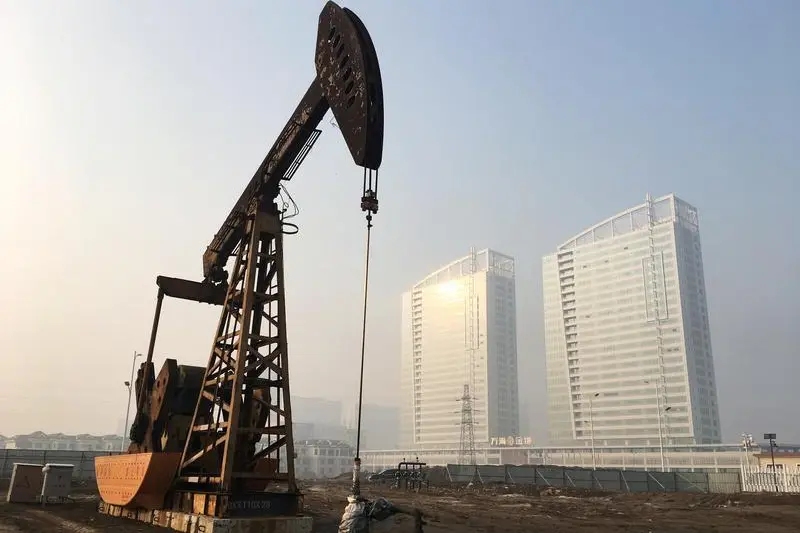PHOTO
(The opinions expressed here are those of the author, a columnist for Reuters.)
LAUNCESTON, Australia - Chinese refiners dipped into crude stockpiles for the second time in three months in September as they processed record volumes of oil even as imports dipped.
Refiners drew about 240,000 barrel per day (bpd) from inventories in September, a sharp reversal from August when they added about 1.32 million bpd to storage tanks.
Refiners also called on stockpiles in July, though, when refinery processing exceeded the total volume of available crude by 510,000 bpd.
The inventory draws in September and July came as China's refiners boosted throughput to meet rising domestic demand and higher fuel exports. As well, a strong rally in global oil prices has lowered the incentive to keep crude imports at elevated levels.
China doesn't disclose the volumes of crude flowing into or out of strategic and commercial stockpiles, but an estimate can be made by deducting the amount of crude processed from the total of crude available from imports and domestic output.
China's refineries processed 63.62 million metric tons in September, equivalent to a record high daily rate of 15.48 million bpd, according to data released on Oct. 18 by the National Bureau of Statistics.
The total volume of crude available in September was 62.61 million metric tons, consisting of imports of 45.74 million and 16.87 million of domestic production.
The combined total is equivalent to 15.24 million bpd, meaning that processing exceeded available crude by 240,000 bpd.
China imported large volumes of crude in the first half of the year, however, meaning that for the first nine months of the year it still added to stockpiles.
The total available from both imports and domestic output in the January to September period was 15.54 million bpd, while refinery processing was 14.84 million bpd, so about 700,000 bpd was added to inventories in the first three quarters of 2023.
This means Chinese refiners have effectively been building a war chest of stored crude, allowing them to continue to run their plants at high rates while trimming crude oil imports.
IMPORTS DROPPING?
China's crude imports were 11.13 million bpd in September, down 10.5% from August's 12.4 million bpd, according to customs data.
Imports may be largely steady in October, with LSEG estimating arrivals of 11.60 million bpd, slightly higher then the official September outcome, but weaker than August.
It's likely China, the world's largest importer of crude, is responding to the rally in global prices that started in July after top exporter and de facto leader of the OPEC+ group, Saudi Arabia, committed to an additional voluntary output cut of 1 million bpd and then extended it to the end of the year.
Benchmark Brent crude futures rose from a low of $71.57 a barrel on June 28 to a high of $97.69 on Sept. 28, and were at $91.54 in early Asian trade on Monday.
Given the lag of up to three months between when cargoes are arranged and physically delivered, the strong rally was always likely to show up in China's imports from September onwards.
On the evidence of September's imports and October's forecast, it does seem China's refiners are easing back on buying crude, when compared to the strong outcomes for most of the first eight months of the year.
Furthermore, they are favouring discounted Russian, Iranian and Venezuelan barrels over more expensive crude from traditional suppliers in the Middle East, such as Saudi Arabia and the United Arab Emirates.
It's also likely China's refiners will continue to export refined fuels, especially diesel, given the elevated margins for the transport fuel in Asia and the release of new government quotas for overseas sales.
Diesel exports were 295,000 bpd in September, down slightly from 304,800 bpd in August, although shipments for the first nine months are up 117.1% from the same period in 2022.
LSEG expects China's diesel exports to reach as high as 1.2 million metric tons in October, which would be equivalent to 290,000 bpd.
Overall, it appears China's refiners are responding to overall market signals by trying to trim imports of expensive crude while exporting profitable refined fuels.
The opinions expressed here are those of the author, a columnist for Reuters.
(Editing by Tom Hogue)























